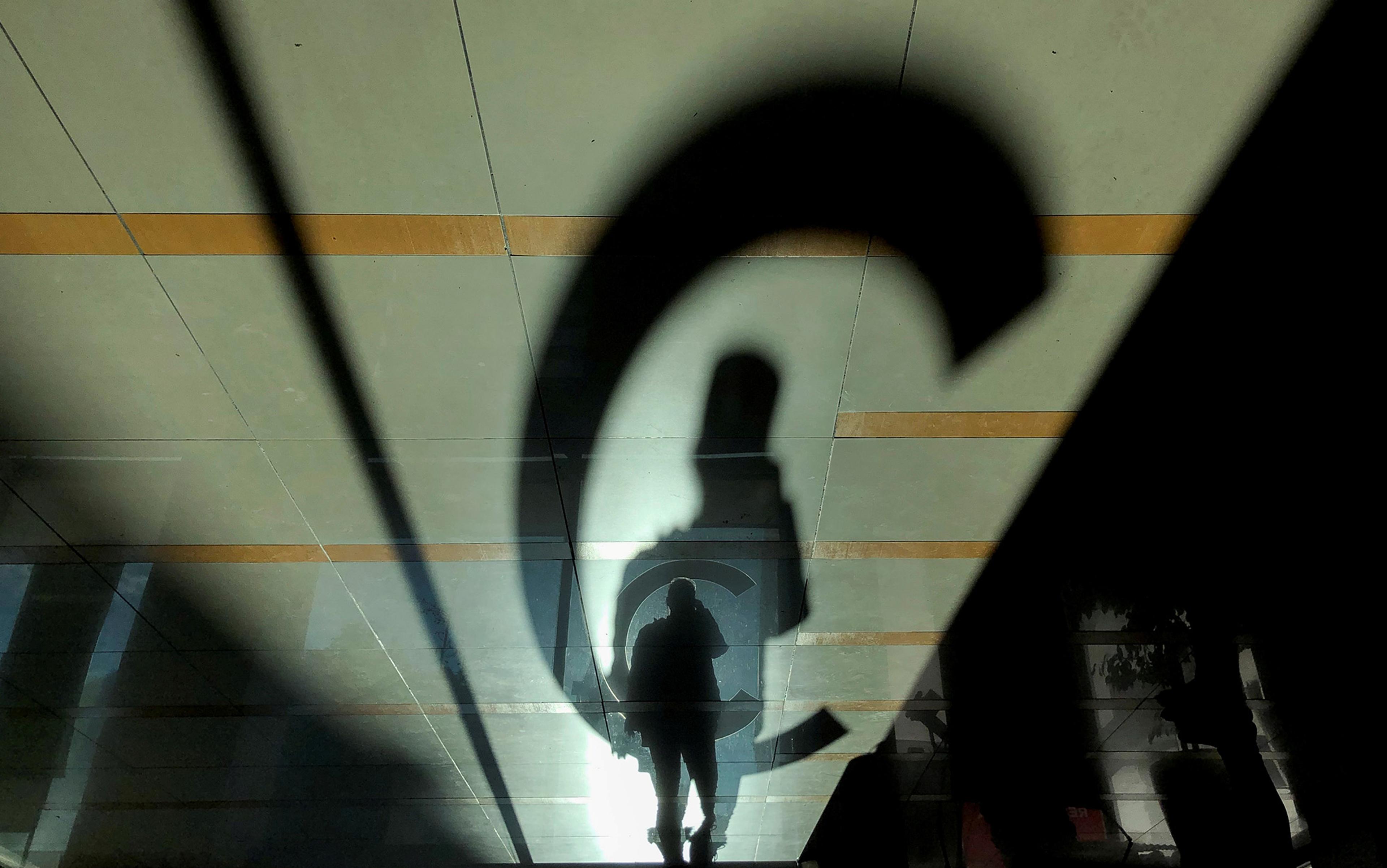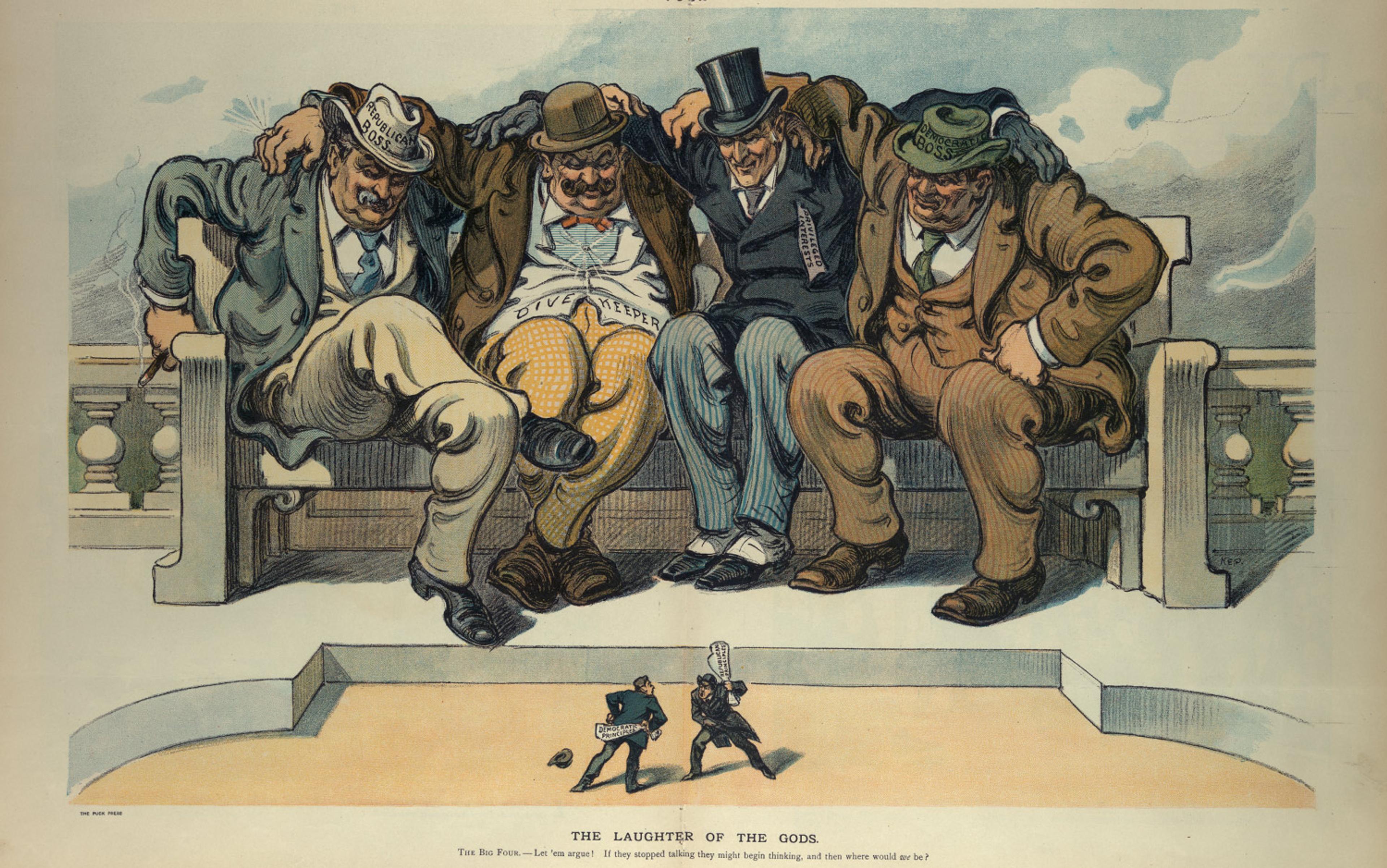Across college campuses and the corporate landscape, a big idea has taken hold: the notion that microaggressions – subtle but offensive comments or actions directed at minorities or other powerless people – can lower performance, lead to ostracism, increase anxiety, and sometimes cause so much psychological pain that the recipient might even commit suicide. Yet despite the good intentions and passionate embrace of this idea, there is scant real-world evidence that microaggression is a legitimate psychological concept, that it represents unconscious (or implicit) prejudice, that intervention for it works, or even that alleged victims are seriously damaged by these under-the-radar acts. It is entirely possible that future research will alter some of these verdicts. Until the evidence is in, though, I recommend abandoning the term microaggression, which is potentially misleading. In addition, I call for a moratorium on microaggression training programmes and publicly distributed microaggression lists now widespread in the college and business worlds.
Context is all-important here. Despite impressive societal strides, racial prejudice remains an inescapable and deeply troubling reality of modern life. As recently as 2008, 4 to 6 per cent of Americans acknowledged in a national poll that they would be unwilling to vote for any African-American candidate as president. And this deeply troubling figure might be an underestimate given the social undesirability attached to admissions of racism. Indeed, a growing number of scholars contend that prejudice often manifests in subtler forms than it did decades ago. From this perspective, prejudice has not genuinely declined – it has merely become more indirect and insidious. There could well be some truth to this possibility.
Enter the concept of microaggressions, those subtle snubs, slights and insults directed at minorities, as well as women and other historically stigmatised groups. Compared with overtly prejudicial comments and acts, they are commonly understood to reflect less direct, although no less pernicious, forms of racial bias. For example, in attempting to compliment an African-American college student, a white professor might exclaim with surprise: ‘Wow, you are so articulate!’ presumably communicating implicitly that most African-American undergraduates are not in fact well-spoken. Last year, Shaun R Harper, founder of the Center for the Study of Race and Equity in Education at the University of Pennsylvania, told an Intelligence Squared debate about meeting an African-American student whose engineering professor had expressed incredulity that he’d received a perfect score on an exam.
Few would dispute that these remarks, even if not malicious, are almost certainly callous. Prejudice undoubtedly manifests itself in subtle and indirect ways that have until recently received short shrift in psychological research.
Given this sort of backdrop, the microaggression concept has acquired traction in recent years. The Global Language Monitor deemed ‘microaggression’ the word of the year in 2015, in recognition of its sky-rocketing prevalence in everyday language. A popular Facebook page, The Microaggressions Project, was launched in 2010 to document instances of microaggressions and to demonstrate ‘how these comments create and enforce uncomfortable, violent, and unsafe realities onto people’s workplace, home, school, childhood/adolescence/adulthood, and public transportation/space environments’. As of June 2017, a Google search for ‘microaggression’ and variants returned more than 700,000 hits.
Over the past few years, the concept of microaggression has made its way into public discussions at dozens, if not hundreds, of colleges and universities, with many institutions offering workshops or seminars to faculty members on identifying and avoiding microaggressions. In other cases, colleges and universities such as the University of California, Berkeley have disseminated lists of microaggressions to caution faculty and students against expressing statements that might cause offence to minorities.
Microaggressions, which impact workplace satisfaction, have captured the interest of the business industry, too. In response, a number of major companies, including Coca-Cola and Facebook, have recently provided training to employees to detect and avoid implicitly prejudicial comments and actions, including microaggressions.
All of these applications hinge on one overarching assumption: that the microaggression research programme aimed at documenting the phenomenon is sound, and that the concept itself has withstood rigorous scientific scrutiny. This is not the case. Microaggressions have not been defined with nearly enough clarity and consensus to allow rigorous scientific investigation. No one has shown that they are interpreted negatively by all or even most minority groups. No one has demonstrated that they reflect implicit prejudice or aggression. And no one has shown that microaggressions exert an adverse impact on mental health.
I am hardly the first to raise questions regarding this body of research. Over the past few years in particular, the microaggression concept has been the target of withering attacks from social critics, especially – although not exclusively – on the right side of the political spectrum. These writers have raised legitimate concerns that concepts such as microaggression and trigger warnings (warnings to people regarding distressing material to come) along with so-called protective safe spaces can at times discourage controversial or unpopular speech, and inadvertently perpetuate a victim culture among aggrieved individuals.
My major concern is the rigour of the psychological science itself. In no way do I deny that subtle forms of prejudice exist and are becoming more prevalent in some sectors of society. Nor do I wish to discourage, let alone reject, research into implicit, or unconscious, prejudice. Nor do I contend that microaggressions don’t exist (even if a Breitbart story on my work claims the contrary). Instead, I contend only that microaggressions must be studied properly before we can claim to know their impact or the best ways of reducing the pain that they might cause. Good intentions are a start, but they are not sufficient.
The term microaggression was coined by the psychiatrist Chester Pierce at Harvard University in 1970 to describe seemingly minor but damaging put-downs and indignities experienced by African Americans. Pierce wrote: ‘Every Black must recognise the offensive mechanisms used by the collective White society, usually by means of cumulative proracist microaggressions, which keep him psychologically accepting of the disenfranchised state.’
But it was not until 2007 that the microaggression concept began to filter into the academic mainstream. In an influential article published in American Psychologist, the counselling psychologist Derald Wing Sue at Columbia University defined microaggressions as ‘brief and commonplace daily verbal, behavioural, or environmental indignities, whether intentional or unintentional, that communicate hostile, derogatory, or negative racial slights and insults toward people of colour’. Microaggressions can be verbal comments, for instance subtle racial slights; behaviours, such as ignoring minority individuals; or environmental decisions, including naming all buildings on a college campus after white individuals, or even former slave owners. Sue and his team have called microaggressors ‘perpetrators’, but I prefer the somewhat ungainly term ‘deliverers’ to avoid any connotation of intentionality or malevolence.
To Sue and his colleagues, microaggressions are pernicious precisely because they are usually ambiguous. Victims are typically trapped in a catch-22. Because they are uncertain of whether prejudice has actually been expressed, recipients frequently find themselves in a no-win situation. If they say nothing, they risk becoming resentful. Furthermore, they might inadvertently encourage further microaggressions from the same person. In contrast, if they say something, the deliverer might deny having engaged in prejudice and in turn accuse minority-group members of being hypersensitive or paranoid.
Sue and his team differentiated among three subtypes of microaggressions, based on observation. Microassaults, which are the most blatant of the three, are explicit racial derogations ‘characterised primarily by a verbal or nonverbal attack meant to hurt the intended victim through name-calling, avoidant behaviour, or purposeful discriminatory actions’. They might include using racial slurs, drawing a swastika on someone’s door, or referring to an African American as ‘coloured’. In contrast to other microaggressions, microassaults are often intentional.
Microinsults are barbs and put-downs that impart negative or even humiliating messages to victims; they ‘convey rudeness and insensitivity and demean a person’s racial heritage or identity’. For example, an employer who says: ‘I believe that the most qualified person should get the job, regardless of race’ is delivering a microinsult, as is a teacher who fails to call on a minority student who raises her hand in class.
The statement ‘America is a melting pot’ ostensibly tells minority individuals to conform to majority culture
Finally, microinvalidations ‘exclude, negate, or nullify the psychological thoughts, feelings, or experiential reality of a person of colour’. According to Sue, a microinvalidation could be a white person informing an African American that ‘I don’t see colour’; it might also be an African-American couple receiving poor restaurant service and being told by white friends that they were oversensitive in interpreting this poor service as race-related.
Sue and his research team list a series of microaggressions that they say could be particularly dangerous, divided into categories: for example, the statement that ‘America is a melting pot’ falls under the category of ‘colour-blindness’ and ostensibly communicates the message that minority individuals should conform to majority culture. Saying ‘I believe the most qualified person should get the job’ falls under the category of ‘myth of meritocracy’, and is said to communicate the message that minorities have unfair advantage when applying for employment.
Intriguing as they are, Sue’s conclusions are really just theoretical conjectures based on information gleaned largely from focus groups, and are in no way backed up by rigorous data or experimental techniques. Despite this limitation, the past decade has witnessed the extension of the microaggression concept to other groups who historically have been the targets of prejudice and discrimination, including women; gay, lesbian, and transgender individuals; Asian Americans; Latinos; Muslim Americans and the obese. Virtually all of these extensions presume that the microaggression concept has already been validated and is well-established in African Americans – despite the fact that, by any standard of psychological science, this concept does not pass scientific scrutiny.
Microaggression, like most and perhaps virtually all psychological constructs, such as intelligence, extraversion and schizophrenia, is what philosophers term an open concept, characterised by intrinsically fuzzy boundaries, an indeterminate list of indicators, and an unclear inner nature. Open concepts are not necessarily problematic. To the contrary, they often allow researchers to explore a poorly understood phenomenon in an open-ended way.
As scientific knowledge progresses and information accrues, the concept can become less ‘open’. For example, in the days of the 19th-century Austrian scientist Gregor Mendel and even much later, the gene was initially a ‘wide open’ concept, understood only as a hypothesised unit of transmission of heritable traits. With the discovery of the structure of DNA, the concept became considerably more closed. At the same time, there is the risk of an open concept being so imprecisely defined and porous in its boundaries that it is not at all apparent where it begins or ends. When this is the case, concepts become ripe for abuse by advocates with different, even opposing, political agendas.
In the case of the microaggression concept, it is dubious whether its definition is sufficiently clear or consensual to permit adequate scientific progress. For example, it is not evident which kinds of actions constitute a verbal, behavioural or environmental indignity, nor what severity of indignity is necessary for an action to constitute a microaggression.
All this vagueness and ambiguity can lead to outright contradictions in what is or is not a slight. For example, both ignoring and attending to minority students in classrooms have been deemed to be microaggressions by some authors: one researcher called out ‘teachers ignoring the raised hands of Asian-American students in classrooms’ as a microaggression. Another regarded complimenting the student with a remark such as ‘That was a most articulate, intelligent, and insightful analysis’ as a microaggression. In still other cases, they have regarded both praising and criticising minority individuals as microaggressions. In one striking example, researchers solicited reports of supervisor microaggressions from 10 African-American graduate students in clinical and counselling psychology programmes. The authors identified both withholding criticism from supervisees and providing them with tough criticism as microaggressions.
Compounding this problem, microaggressions necessarily lie in the eye of the beholder. It is doubtful whether an action that is largely or exclusively subjective can legitimately be deemed ‘aggressive’. After all, referring to an action as aggressive implies at least some degree of consensus regarding its nature and intent. Take the statement: ‘I realise that you didn’t have the same educational opportunities as most whites, so I can understand why the first year of college has been challenging for you.’ If one person interprets the comment as patronising and hostile while another sees it as supportive, should it be classified as a microaggression?
The ‘eye of the beholder’ assumption generates other logical quandaries. In particular, it is unclear whether any verbal or nonverbal action that a certain proportion of minority individuals perceives as upsetting or offensive would constitute a microaggression. Would a discussion of race differences in personality, intelligence or mental illness in an undergraduate psychology course count? Or a dinner table conversation regarding the societal pros and cons of affirmative action? What about news coverage of higher crime rates among certain minority populations than among majority populations? It is likely that some or all of these admittedly uncomfortable topics would elicit pronounced negative emotional reactions among at least some minority group members.
This article itself could constitute a microaggression, as it challenges the experience of minority-group individuals
The boundaries of the microaggression concept appears so indistinct as to invite misuse or abuse. For example, according to Sue’s team, ‘the fact that psychological research has continued to inadequately address race and ethnicity … is in itself a microaggression’. Although few would dispute that the field of psychology should accord greater emphasis to certain scientific questions bearing on prejudice and discrimination, the rationale for conceptualising this insufficient attention as a microaggression appears flimsy.
One major scholar in the field even regarded the statement ‘I don’t usually do this, but I can waive your fees if you can’t afford to pay for counselling’ as a microaggression. The University of California system informs faculty members that referring to the United States as a ‘land of opportunity’ constitutes a microaggression, presumably because many minority individuals are not afforded the same opportunities for success as majority individuals. At least one research team has even classified saying ‘God bless you’ following another person’s sneeze as a microaggression, presumably because it could offend nonreligious individuals. According to some expansive definitions of microaggressions, this article itself could presumably constitute a microaggression, as it challenges the subjective experience of certain minority-group individuals.
Given the fluid boundaries of the concept, in hindsight even statements that might appear to be explicitly anti-prejudiced have been interpreted as microaggressions. Sue’s team, for instance, analysed what the Arizona senator and then-presidential candidate John McCain said in response to an elderly white woman during a 2008 campaign stop in Minnesota. The woman said: ‘I can’t trust Obama … He’s an Arab,’ and McCain immediately grabbed the microphone to correct her. ‘No ma’am,’ McCain retorted, ‘he’s a decent family man [and] citizen that I just happen to have disagreements with … He’s not [an Arab]!’
While acknowledging that McCain’s defence of Obama was ‘well-intentioned’, the researchers dubbed it a ‘major microaggression’. According to Sue, McCain’s assertion that Obama is ‘a decent family man’ implicitly communicated the message that most Arab or Muslim males are not decent family men, as well as the message that were Obama in fact a Muslim (which he is not), it would have implied that he was somehow dangerous or at least unworthy of admiration.
Although these post-hoc interpretations of McCain’s comments are interesting and might be defensible, they are concerning. In particular, they raise the possibility that a vast number of statements can be retrospectively labelled microaggressions. For example, had McCain responded: ‘No ma’am, he’s not an Arab – but what would be wrong if he were?’ – which is the response that Sue said McCain should have given – some advocates could have contended that McCain was subtly intending to insinuate that Obama might indeed be a Muslim. Furthermore, Sue’s interpretation overlooks the possibility that McCain was merely responding to the affective gist of the woman’s comment – namely, that Obama is a bad and untrustworthy person – rather than to its literal content. In doing so, he effectively communicated his central point – namely, that although he disagreed with Obama on many things, he did not believe that Obama was trying to conceal or lie about his ancestry, or that Obama was a bad person.
Conversation demands precision, but in the realm of microaggression, ambiguity reigns. Indeed, the recipient of a microaggression always harbours the nagging question of whether it really happened. Sue himself says that many racial microaggressions are so subtle that neither target nor perpetrator might entirely understand what is going on. The deep ambiguity of the phenomenon means that these statements can give us more insight into the respondents’ personality traits, attitudes and learning history than anything else. Furthermore, without evidence that external observers can agree on the presence or absence of microaggressions, how can we know whether a given microaggression occurred or was merely imagined?
The idea of microaggression stands at loggerheads with swaths of social and cognitive science. As José Duarte, then a psychology graduate student at Arizona State University, and his research team observed in a widely discussed article, much of contemporary social psychology are characterised by embedded values – typically of a politically progressive slant. The problem arises when researchers are unaware of the extent to which their sociopolitical perspectives infiltrate their assumptions regarding scientific phenomena. ‘Values become embedded when value statements or ideological claims are wrongly treated as objective truth, and observed deviation from that truth is treated as error,’ write Duarte and colleagues. Widely accepted studies show that all of us, researchers included, are oblivious to many of our biases, and that the best means of combatting such biases is to collaborate with, or at least seek the input of, colleagues who hold differing and ideally offsetting biases.
The microaggression field, like much of psychology, lacks diversity of thought, and it shows. For instance, statements such as ‘everyone can get ahead if they work hard’ or ‘I believe that the most qualified person should get the job’ are seen as microaggressions, but they might also be endorsed by those with highly individualistic worldviews, no prejudice involved.
Statements including ‘I am colour-blind’ or ‘We are all humans’ or ‘I don’t see you as black; I just see you as a regular person’ are assumed to be inherently false in the microaggression field. ‘Attaining a racially colour-blind society is unattainable and only reinforces racism and societal inequality,’ wrote Sue in his book Race Talk and the Conspiracy of Silence (2015). Although this position might be defensible, it is hardly the only legitimate perspective on racial colour-blindness. For example, many non-prejudiced participants might view the goal of a racially colour-blind society as achievable in principle, if not fully in practice. Ironically, conceptualising such statements as microaggressions runs counter to the crux of Reverend Martin Luther King Jr’s eloquent affirmation: ‘I have a dream that my four little children will one day live in a nation where they will not be judged by the colour of their skin, but by the content of their character.’ A compelling argument could be advanced that many putative microaggressions, especially microinvalidations, lend themselves to a myriad of potential interpretations, some of them largely malignant, others largely benign.
Moreover, many of the implicit messages posited by Sue and colleagues appear to reflect the distortion of mind that cognitive-behavioural therapists term mind-reading. In this scenario, individuals assume – without attempts at verification – that others are reacting negatively to them. Cognitive-behavioural therapists typically regard mind-reading as a subtype of the broader tendency of individuals to jump to premature conclusions.
The concept of an unintentional microaggression is an oxymoron
Some microaggression researchers – and the people reporting so much pain from these comments and acts – might be themselves committing a similar error. For example, Sue regarded the question ‘Where were you born?’ directed at Asian Americans as a microaggression because it reflects the assumption that recipients are ‘different, less than, and could not possibly be, “real” Americans’. Yet most cognitive-behavioural therapists would maintain that leaping to this inference without attempting to check it out constitutes mind-reading. Instead of prejudice, it might in many cases reflect genuine and sincere curiosity regarding an individual’s culture of origin.
Even the word ‘microaggression’ can lead us astray. It implies that statements are aggressive in nature. Yet, confusingly, microaggression advocates posit that such behaviours are typically unintentional. As a result, the root word ‘aggression’ in ‘microaggression’ is conceptually confusing and misleading. Essentially, all contemporary definitions of aggression in the social-psychological and personality literatures propose or at least strongly imply that the actions comprising this construct are intentional. From this perspective, the concept of an unintentional microaggression is an oxymoron.
Does it matter? Research suggests that it might, because the perception of intent is a critical correlate of, and perhaps contributor to, aggression. Specifically, social-cognitive research on hostile attribution of intent suggests that if individuals perceive aggressive intent, they are more likely to respond aggressively in turn. Hence, labelling ambiguous statements or actions as ‘aggressive’ might inadvertently foster aggression in recipients. And labelling certain statements or acts as ‘microaggressions’ could fuel anger and even overt aggression in recipients: this possibility should be examined in the lab.
Even the prefix ‘micro’ sometimes gets things wrong – implying that these transgressions are barely visible or at least challenging to detect. Yet for a number of purported microaggressions, especially microassaults, this assumption is dubious. In particular, many or most microassaults appear to be emblematic of traditional, ‘old-fashioned’ racism. For example, one group of researchers says that ‘microassault may include calling a woman a “bitch” or a “whore”’. Sue and his team include in their list of microassaults the act of referring to an Asian American as a ‘Jap’ or a ‘Chink’ – but, really, is that kind of verbal attack ‘micro’ in the least? Such statements and behaviours are grossly offensive, and subsuming them under the broad microaggression umbrella could inadvertently trivialise patently racist acts. Moreover, if investigators find that total scores on microaggression are associated with minority psychopathology, might this not merely reflect already-established statistical associations between overt racism and mental health?
The terrain is fraught. Numerous items identified as microaggressive in the literature appear fairly common in everyday life, and not necessarily driven by hostile intent. For example, one study includes such items as: ‘A White person failed to apologise after stepping on my foot or bumping into me’ and ‘At a restaurant, I noticed that I was ignored, overlooked, or not given the same service as Whites.’ Being passed over by a taxi driver for a white person has been listed as a microaggression. In a study of microaggressions experienced by African-American faculty members in counselling and psychology programmes, the researchers identified a student calling a professor by his or her first name as a microaggression.
Yet it is likely that virtually all individuals who have lived in a major city, regardless of their race, have at least once been passed over by a taxi driver for a white person, and that virtually all faculty members, regardless of their race, have at least once had a student address them by their first name. Without at least some information concerning the frequency of the events, it’s difficult to exclude the possibility that many microaggressions merely reflect everyday occurrences in the lives of both majority and minority individuals.
All the vagaries and inconsistencies leave us an armchair taxonomy of microaggression, with rigorous psychological research yet to be done. Despite its provisional nature and in the absence of validation, the routine list of microaggressions continues to be distributed verbatim in many colleges. Furthermore, the focus groups used to generate the items have consistently been self-selected to include leaders and participants strongly predisposed to believe in microaggressions, potentially engendering serious biases. How do we know that offence taken at these comments derives from widespread social upset rather than the individual pain of the personalities who share the assumptions of microaggression researchers?
All this requires a hard and careful look. Numerous studies have revealed robust correlations between microaggressions and adverse mental-health outcomes, such as psychological distress, anxiety and depression, among minorities. Researchers have argued that the cumulative effects of microaggressions shorten life expectancy and even foster suicidal ideation, but where is the solid proof?
Let’s be clear: prejudice and discrimination remain part and parcel of the daily landscape of many minority individuals. In a recent survey by the American Psychological Association, more than three-fourths of African Americans reported encountering at least some instances of discrimination on a day-to-day basis, and almost two in five African-American males said that they had been mistreated by the police. Given these sobering statistics, it is essential that psychological science continues to elucidate the sources and consequences of acts of prejudice and discrimination, both subtle and overt.
A time-out on ill-advised programmes such as microaggression training is long overdue
The study of microaggressions is a potentially fruitful step in this direction, but it leaves a daunting number of critical scientific questions, both conceptual and methodological, unaddressed and unanswered. In this regard, the microaggression research programme (MRP) might be little different from other nascent psychological constructs that await refinement in light of additional scientific knowledge. Given the numerous unresolved questions surrounding microaggression, MRP scholars must be circumspect in advocating for the application of this fledgling concept to colleges, businesses and other real-world settings until more science has been conducted. In the interim, humility should be the watchword.
So, what to do? Although the MRP is presently highly problematic, we should not throw the baby out with the bathwater. Subtle prejudice undeniably exists, and a certain proportion of what are now misleadingly termed ‘microaggressions’ probably reflect such prejudice. If we could reconceptualise most microaggressions as inadvertent cultural and racial slights, we’d all be better off. The microaggression culture prevalent on many campuses and in many businesses makes just about everyone feel threatened, and could amp up already simmering racial tensions. This culture often makes minority individuals feel that they should be on the lookout for mild signs of prejudice, and that they need to walk on eggshells. Distributing lists of ‘forbidden’ phrases to campus administrators or faculty members, or mandating microaggression training for employees, are unlikely to be helpful. A time-out on these ill-advised programmes is long overdue.
Yes, many majority individuals say unintentionally offensive things to minority individuals from time to time, often because they are careless or oblivious, or because they are simply unaware of these individuals’ past racial and cultural experiences. Microaggressions should be the start of an open dialogue, not the end. Telling someone: ‘What you just said is a microaggression. You offended me and you have to stop’ is unlikely to be conducive to a productive two-way conversation. In contrast, it could be a fruitful entry point into a difficult but mutually enlightening discussion to say: ‘You probably didn’t mean this, but what you said bothered me. Maybe we’re both misunderstanding each other. I realise that we’re coming from different places. Let’s talk.’
Portions of this article have been adapted from ‘Microaggressions: Strong Claims, Inadequate Evidence’ by Scott O Lilienfeld (2017), with permission from Perspectives on Psychological Science.






